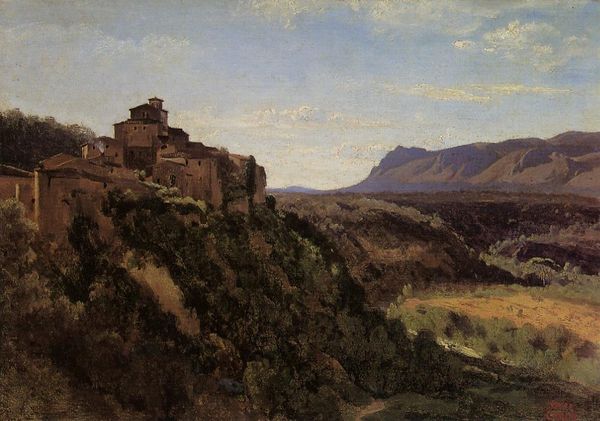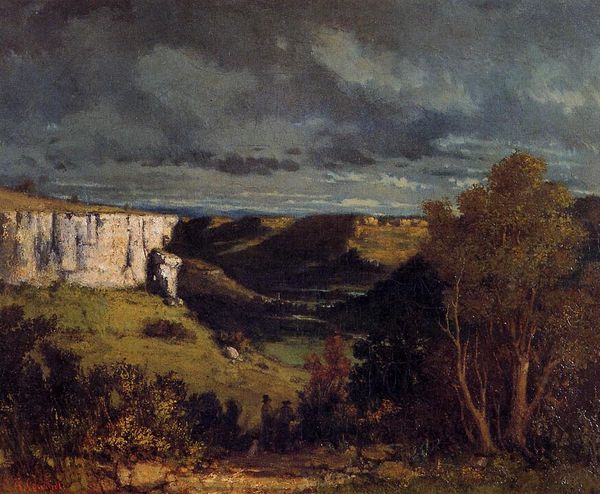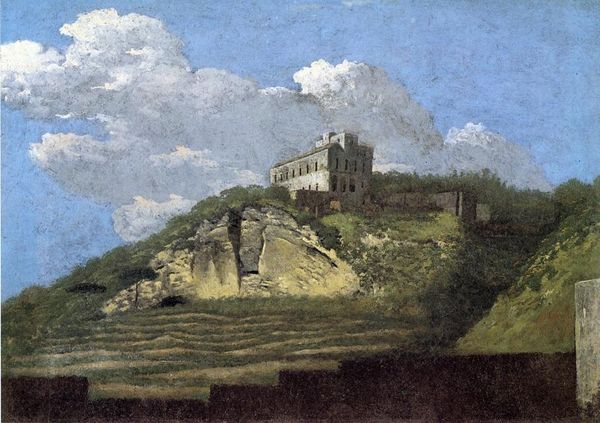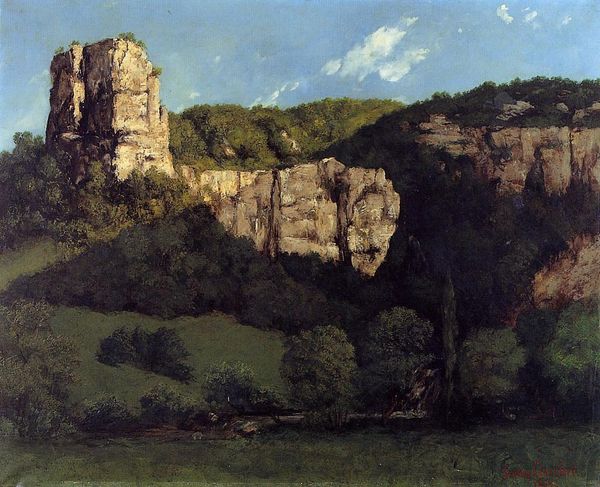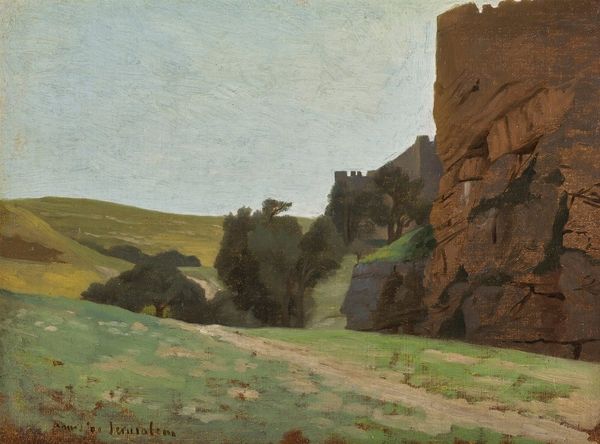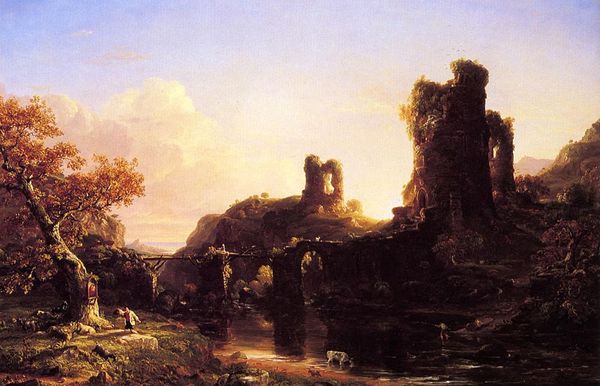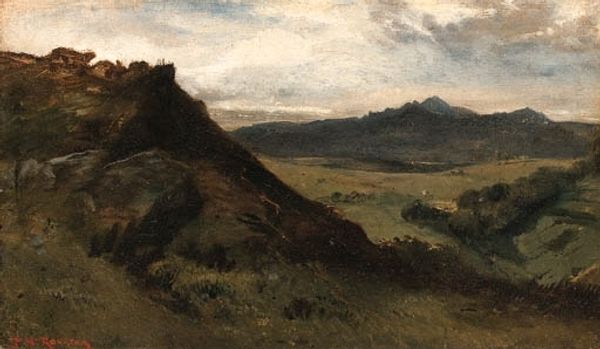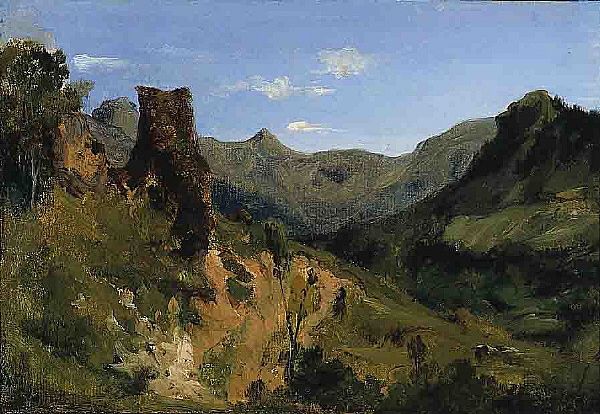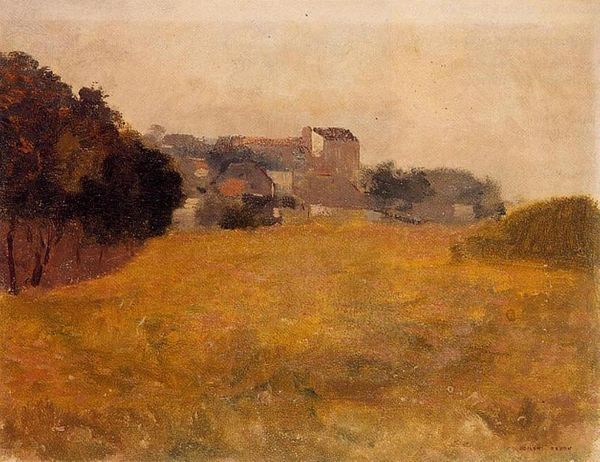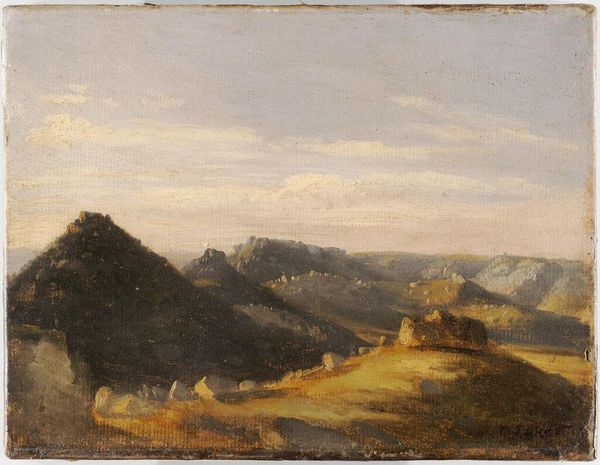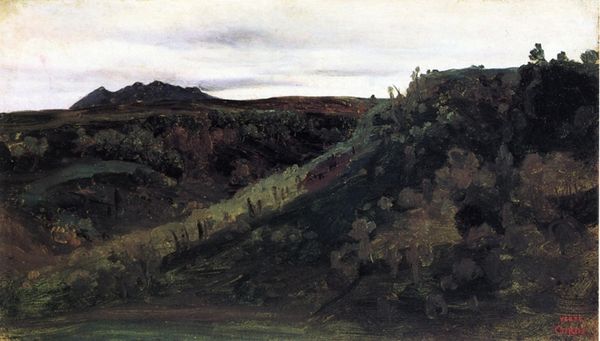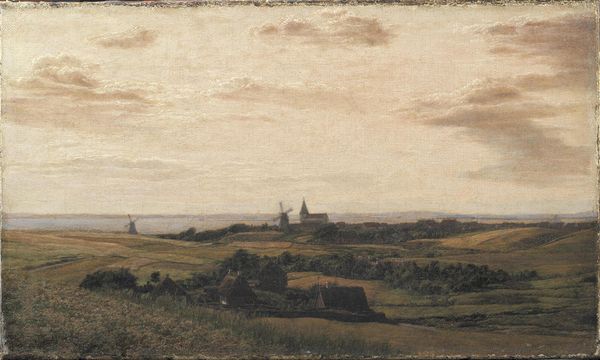
Civita Castellana Buildings High in the Rocks (La Porta San Salvatore) 1827
0:00
0:00
jeanbaptistecamillecorot
Private Collection
painting, plein-air, oil-paint, architecture
#
portrait
#
sky
#
cliff
#
painting
#
grass
#
plein-air
#
oil-paint
#
landscape
#
impressionist landscape
#
figuration
#
oil painting
#
rock
#
romanticism
#
natural-landscape
#
cityscape
#
nature
#
architecture
Copyright: Public domain
Editor: Here we have "Civita Castellana Buildings High in the Rocks (La Porta San Salvatore)," an 1827 oil painting by Camille Corot. The scale feels vast, almost theatrical, with that imposing rock face. What catches your eye, how do you interpret this work? Curator: What I find particularly striking is how Corot uses this landscape not just as scenery, but as a stage for observing social dynamics. Consider the period: 1827. Romanticism is peaking, and artists are increasingly interested in the power of nature but they also wanted to connect human endeavors to grand narrative about power and its effects. Are we supposed to admire these people in relationship with nature or worry? What kind of feeling it elicits? Editor: That's interesting, the social aspect hadn’t immediately jumped out. I was more focused on the artistic representation of nature itself. The figures in it look insignificant from far. How do we read Corot’s commentary here? Curator: Exactly! The small figures on the path invite questions about the relationships between architecture, landscape, and human presence within those grand designs. The choice of painting "en plein air" which became a big hit in France, wasn't merely about capturing natural light and form, as Impressionists would later prioritize, but also about situating oneself politically within a tradition. Courbet for example, positioned the artist in terms of power by including patrons in painting while they paint and critique. Is Corot challenging traditional power structures or romanticizing their decay? Editor: So, by placing those tiny figures amidst this imposing scenery, is Corot perhaps hinting at the diminished role of humanity in the face of history and nature's enduring presence? It shows a good relationship with nature instead of fighting with it to modify or build. Curator: Precisely! The ruin of the old architectural designs become like one more natural formation among the others. Ultimately, the beauty we find in this image is inseparable from its subtle commentary on history and power, nature and people. Editor: This painting now feels much more layered! Thank you for shedding light on those nuances.
Comments
No comments
Be the first to comment and join the conversation on the ultimate creative platform.
